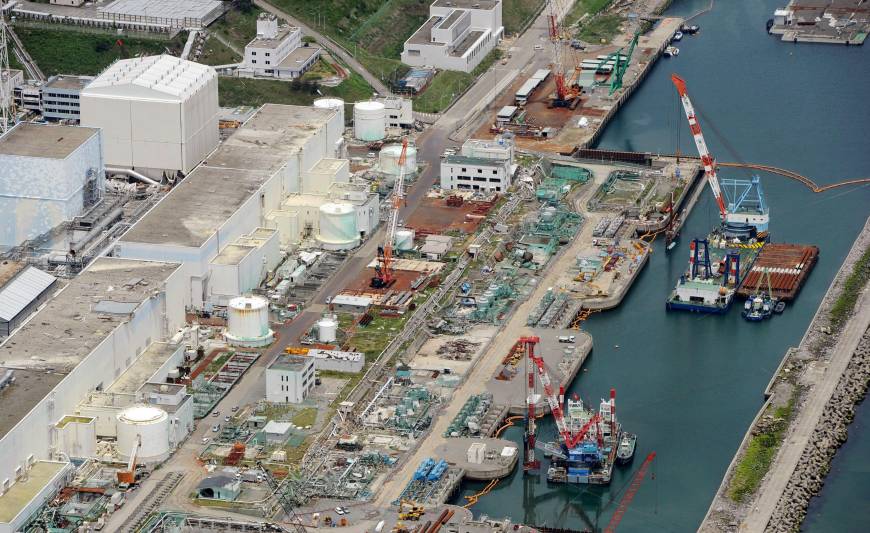Watchdog says pit may not be only source of radioactive spike
The Japan Times
July 10, 2013

The Nuclear Regulation Authority said Wednesday it strongly suspects highly radioactive water at the Fukushima No. 1 nuclear power plant is seeping into the ground and contaminating the Pacific Ocean.
“We must find the cause of the contamination . . . and put the highest priority on implementing countermeasures,” NRA Chairman Shunichi Tanaka told a meeting of the body’s commissioners after they had examined recent studies carried out on groundwater samples at the plant that detected high levels of cesium, tritium and other radioactive contamination.
Tokyo Electric Power Co. claims it believes the source of contamination to be a pit from which highly radioactive water was found seeping into the sea in April 2011, shortly after the nuclear crisis erupted at the plant. However, the NRA said Tepco’s explanation was questionable and noted that toxic water in the area may not be the only source.
The NRA also urged Tepco to speed up completion of a deeply sunken coastal containment wall between the plant and the Pacific to keep the increasingly highly radioactive groundwater from reaching the ocean.
Tepco should try to finish the wall earlier than the planned March 2015 completion date and should attempt to remove contaminated water collecting in trenches at the plant, the NRA said in a statement Wednesday.
According to Tepco, the level of radioactive cesium in groundwater collected Tuesday from an observation well near the sea soared over 100 times higher than the level taken Friday.
Tuesday’s sample contained 11,000 becquerels of cesium-134 per liter and 22,000 becquerels of cesium-137 per liter.
The nation’s nuclear safety guidelines require cesium-137 levels for waste liquids at nuclear plants to remain below 90 becquerels per liter.
The water also contained 900,000 becquerels of other radioactive substances that emit beta rays, including strontium.
The cesium-137 levels had risen from 18,000 becquerels per liter a day earlier, while those of cesium-134 increased to 11,000 becquerels from 9,000, Tepco said. Safety guidelines require cesium-134 levels at plants to remain below 60 becquerels per liter. The nation’s safety limit for radioactive materials in drinking water is 10 becquerels per liter.
